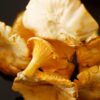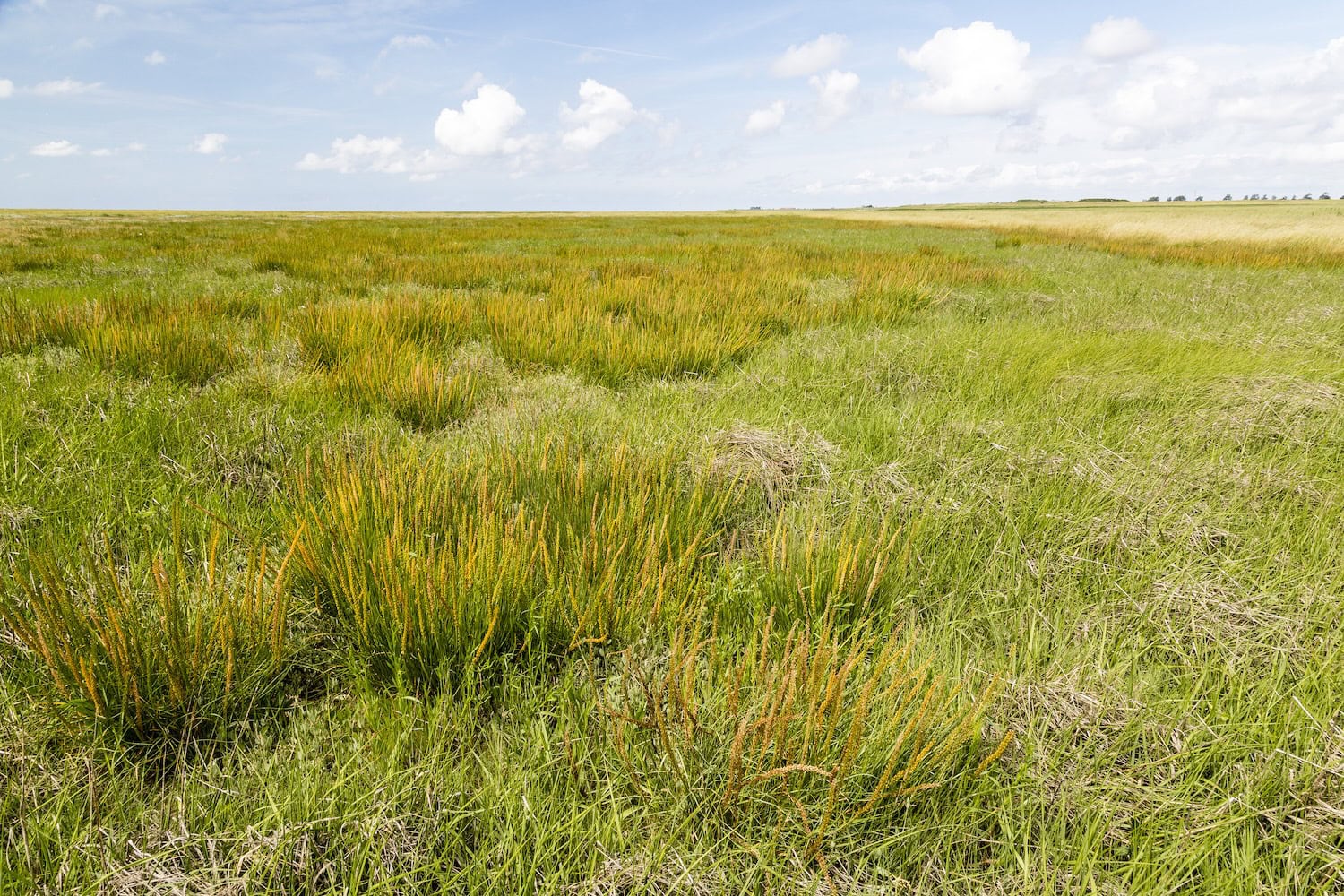Salt marshes are strips several kilometers wide, criss-crossed by ditches and tidal creeks where the tide flows in and out. An impressive variety of plants has made its way here through salt water and extreme sunlight. Some of these herbs are even on our menu.
Unique habitat on the coast
When the sun rises over the salt marshes on the North Sea coast in summer, this unique biotope comes to life. This special habitat stretches from the Netherlands to the Schleswig-Holstein coast and even Denmark and is one of the largest of its kind in the world.
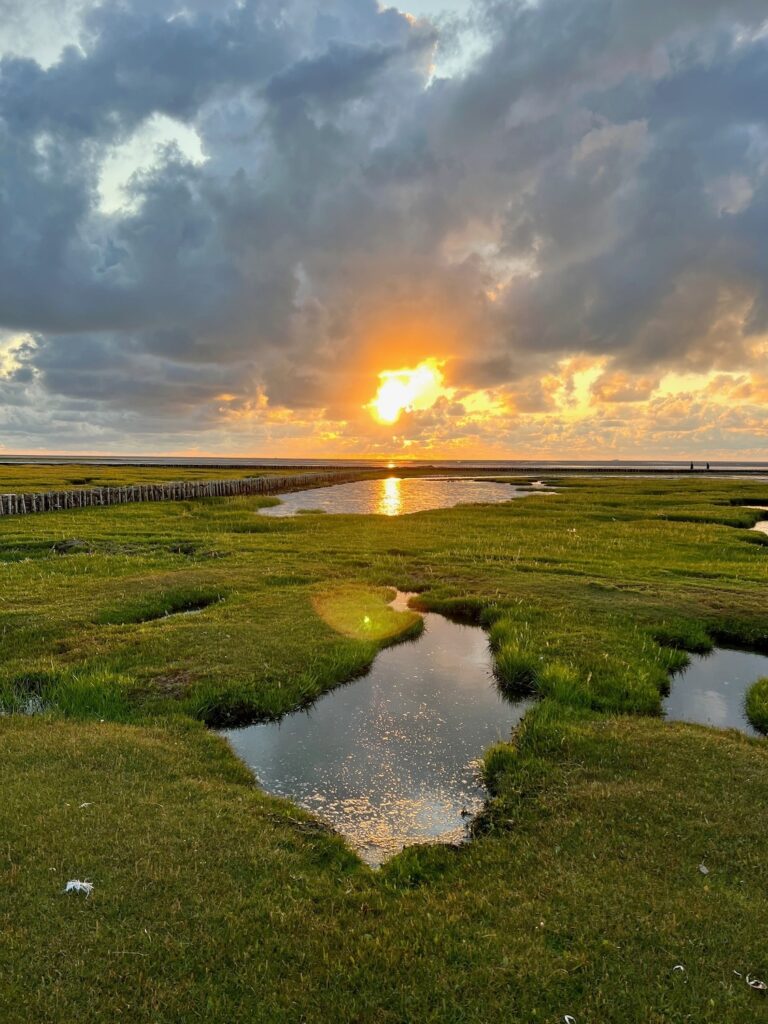
The plants that grow on the salt marshes are true survival artists: during storm surges, the dense greenery is washed over by the salty North Sea water. Plants such as the sea lavender or the cordgrass have developed special mechanisms to deal with the salt – they dilute it, store it and release it again in the form of sparkling, wafer-thin salt crystals.
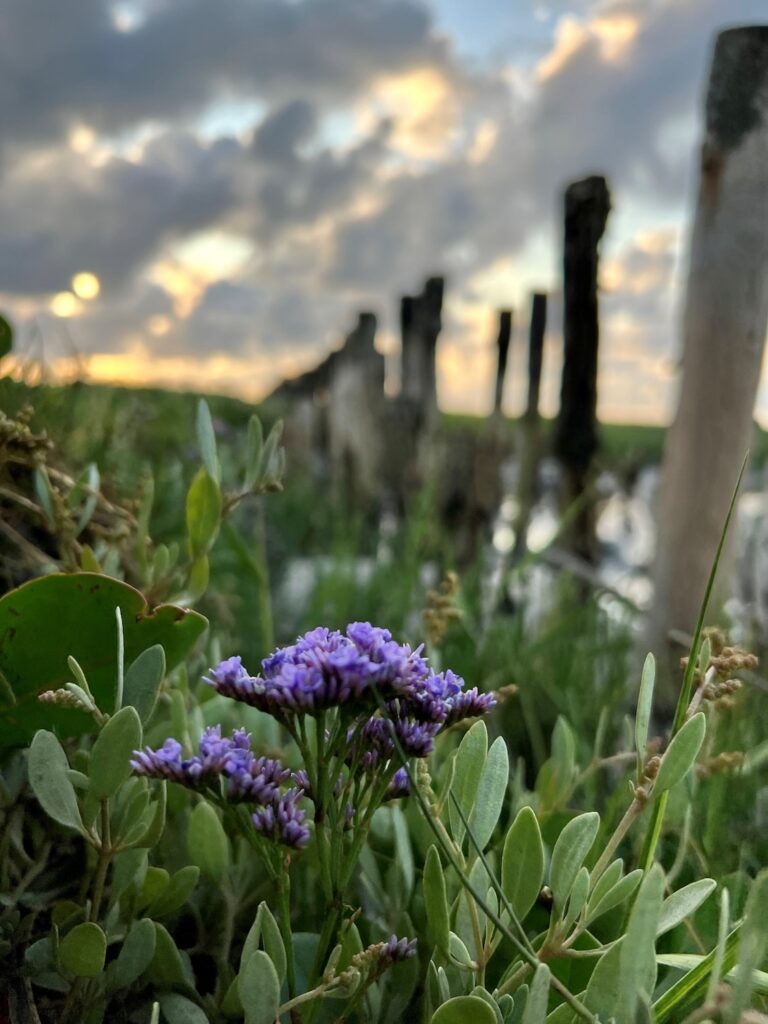
Tips for visitors: If you want to experience the salt marshes with all your senses, you should join a guided tour. Places such as the St. Peter-Ording nature experience area, the salt marsh nature trail on the Hamburg Hallig and the Stockenstieg at the Westerhever lighthouse have approved trails where visitors can explore the salt marshes.
From the salt marshes to the kitchen
One of the best-known herbs of the salt marshes is marsh samphire, also known as salicornia. The small green stalks are crunchy and taste salty, peppery-hot and pleasantly sour. Good news for all those who do not live in the North Sea region: Not only does the herb know its familiar surroundings, it has also long been available in specialist shops. It is delicious raw or lightly blanched in salads or as a crunchy accompaniment to fish dishes with olive oil, a dash of lemon juice and spices.
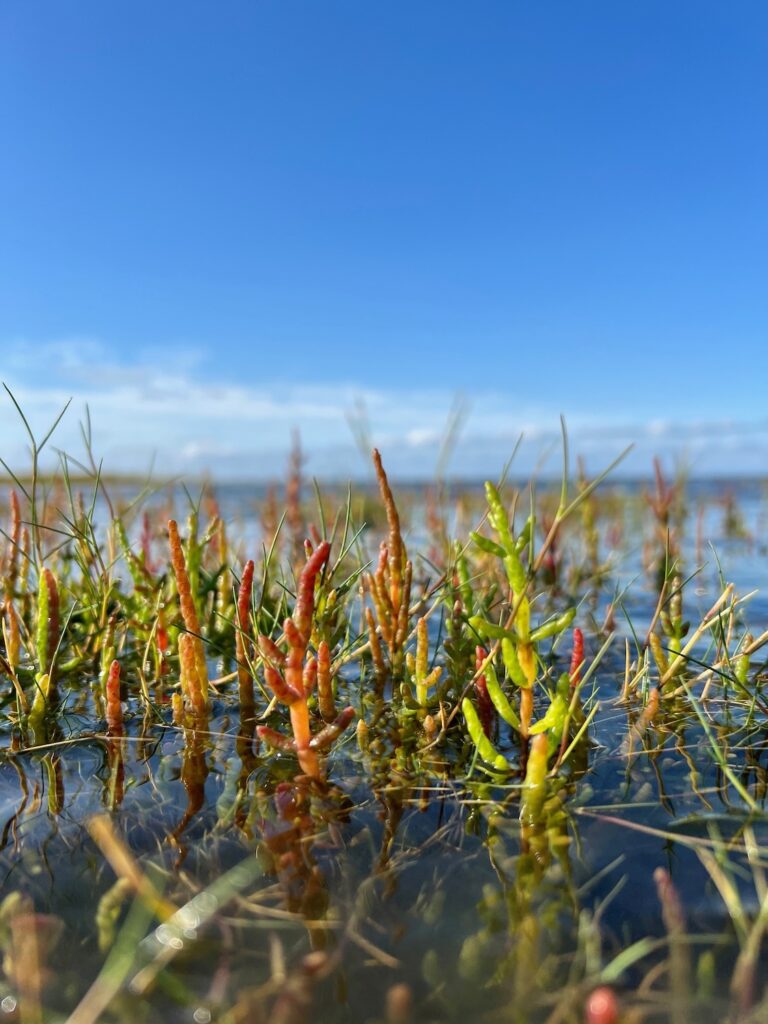
Where samphire stands out in terms of taste, beach wormwood scores with its pleasant aroma. Its sweet and spicy aroma is noticeable even before you see the shiny silvery-white plant. No wonder its aromatic properties are pure inspiration for distillers: The herb is used to make the most delicious herbal schnapps.

When raw, it smells of chlorine, garlic and a little musty – that doesn’t sound very tempting at first. Nevertheless, seaside arrowgrass is another remarkable salt marsh herb (and it smells better after cooking). Visually, it resembles thick chives, but is not hollow and is lighter in color. In East Frisia, the beach trident is cooked and eaten in spring as red cabbage – but be careful, uncooked parts of the plant are poisonous!
In the past, sea plantain was a common vegetable because it is rich in nutrients and tastes like spinach. However, it would not be a salt marsh plantain if it did not have an unmistakably salty taste. When plantain is used raw in salads or cooked like spinach, it should therefore only be salted sparingly.

Natural coastal protection and habitat
Salt marshes are not only good for the stomach, but also for the environment: criss-crossed by ditches and tidal creeks, they are safe places for rearing young fish and nesting sites for birds – a natural coastal protection, so to speak. There are more than 13,000 hectares of salt marshes in front of the dykes in Schleswig-Holstein and on the Halligen islands, which were mostly grazed by sheep until they were designated a national park and Unesco World Heritage Site – this is now no longer the case on almost half of the salt marsh areas.

